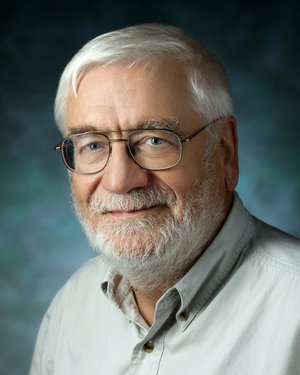Research Lab Results
-
Vestibular Neurophysiology Laboratory
The mission of the laboratory of vestibular neurophysiology is to advance the understanding of how the body perceives head motion and maintains balance - a complex and vital function of everyday life. Although much is known about the vestibular part of the inner ear, key aspects of how the vestibular receptors perceive, process and report essential information are still mysterious. Increasing our understanding of this process will have tremendous impact on quality of life of patients with vestibular disorders, who often suffer terrible discomfort from dizziness and vertigo. The laboratory group's basic science research focuses on the vestibulo-ocular reflexes - the reflexes that move the eyes in response to motions of the head. They do this by studying the vestibular sensors and nerve cells that provide input to the reflexes; by studying eye movements in humans and animals with different vestibular disorders, by studying effects of electrical stimulation of vestibular sensors, and by using mathematical models to describe these reflexes. Researchers are particularly interested in abnormalities of the brain's inability to compensate for vestibular disorders. -
Computational Neuroscience Laboratory
In the computational neuroscience Laboratory, we construct quantitative models of biological nervous systems that are firmly based on their neurophysiology, neuroanatomy and behavior, and that are developed in close interaction with experimentalists. Our main interest is neuronal function at the system level, reflecting the interaction of subsystems to generate useful behavior. Modeling is particularly important for understanding this and other system-level functions, since it requires the interaction of several pathways and neural functions. One of the functions we study is selective attention--that is, the capability of higher animals to scan sensory input for the most important information and to discard all other. Models of the neuronal basis of visual selective attention are constructed by simulating them on digital computers and comparing the results with data obtained from the visual and somatosensory systems of primates. We pay particular attention to the mechanisms involving the implementation of neural mechanisms that make use of the temporal structure of neuronal firing, rather than just the average firing rate. -
Zanvyl Krieger Mind/Brain Institute
The Zanvyl Krieger Mind/Brain Institute is dedicated to the study of the neural mechanisms of higher brain functions using modern neurophysiological, anatomical and computational techniques. Our researchers use various approaches to understand information processing and its influence on perception, memory, abstract thought, complex behavior and consciousness. Systems and cognitive laboratories use neurophysiology, brain imaging and psychophysics to develop a quantitative, network-level understanding of cognitive information processing. Other researchers use analytical approaches such as system identification, dimensionality reduction, information theory and network modeling to understand information processing. Other areas of research in the Institute include the study of how visual and tactile information processing leads to perception and understanding of two- and three-dimensional objects. Another focus is on neural processing and recognition of speech and other complex sounds. Still other laboratories study neural mechanisms of attention, memory formation, motor learning, decision-making and executive control of behavior. -
James Knierim Laboratory
Research in the James Knierim Laboratory attempts to understand the flow of information through the hippocampal formation and the computations performed by the various subfields of the hippocampus and its inputs from the entorhinal cortex. To address these issues, we use multi-electrode arrays to record the extracellular action potentials from scores of well-isolated hippocampal neurons in freely moving rats. These neurons, or ""place cells,"" are selectively active when the rat occupies restricted locations in its environment and help to form a cognitive map of the environment. The animal uses this map to navigate efficiently in its environment and to learn and remember important locations. These cells are thought to play a major role in the formation of episodic (autobiographical) memories. Place cells thus constitute a tremendous opportunity to investigate the mechanisms by which the brain transforms sensory input into an internal, cognitive representation of the world and then uses this representation as the framework that organizes and stores memories of past events.
-
Veit Stuphorn Laboratory
The Veit Stuphorn Laboratory studies the neurophysiological mechanisms that underlie decision making and self-control. We record the activity of single neurons in awake animals that are engaged in decision-making processes. This allows us to identify the types of signals that neurons in specific parts of the brain represent and the computations they carry out. We also study human subjects in the same tasks with the help of fMRI. These parallel experiments provide comparative information about decision processes in human and non-human primates.
-
Swallowing Investigation in Physiology (SIP) Lab
The SIP Lab studies the mechanisms of normal and disordered swallowing. The team conducts research in the areas of swallowing rehabilitation after stroke, effects of aging on swallowing and measurement of swallowing physiology. -
Vestibular NeuroEngineering Lab
Research in the Vestibular NeuroEngineering Lab (VNEL) focuses on restoring inner ear function through “bionic” electrical stimulation, inner ear gene therapy, and enhancing the central nervous system’s ability to learn ways to use sensory input from a damaged inner ear. VNEL research involves basic and applied neurophysiology, biomedical engineering, clinical investigation and population-based epidemiologic studies. We employ techniques including single-unit electrophysiologic recording; histologic examination; 3-D video-oculography and magnetic scleral search coil measurements of eye movements; microCT; micro MRI; and finite element analysis. Our research subjects include computer models, circuits, animals and humans. For more information about VNEL, click here. VNEL is currently recruiting subjects for two first-in-human clinical trials: 1) The MVI Multichannel Vestibular Implant Trial involves implantation of a “bionic” inner ear stimulator intended to partially restore sensation of head movement. Without that sensation, the brain’s image- and posture-stabilizing reflexes fail, so affected individuals suffer difficulty with blurry vision, unsteady walking, chronic dizziness, mental fogginess and a high risk of falling. Based on designs developed and tested successfully in animals over the past the past 15 years at VNEL, the system used in this trial is very similar to a cochlear implant (in fact, future versions could include cochlear electrodes for use in patients who also have hearing loss). Instead of a microphone and cochlear electrodes, it uses gyroscopes to sense head movement, and its electrodes are implanted in the vestibular labyrinth. For more information on the MVI trial, click here. 2) The CGF166 Inner Ear Gene Therapy Trial involves inner ear injection of a genetically engineered DNA sequence intended to restore hearing and balance sensation by creating new sensory cells (called “hair cells”). Performed at VNEL with the support of Novartis and through a collaboration with the University of Kansas and Columbia University, this is the world’s first trial of inner ear gene therapy in human subjects. Individuals with severe or profound hearing loss in both ears are invited to participate. For more information on the CGF166 trial, click here. -
Neuromodulation and Advanced Therapies Center
We investigate the brain networks and neurotransmitters involved in symptoms of movement disorders, such as Parkinson's disease, and the mechanisms by which modulating these networks through electrical stimulation affects these symptoms. We are particularly interested in the mechanisms through which neuromodulation therapies like deep brain stimulation affect non-motor brain functions, such as cognitive function and mood. We use imaging of specific neurotransmitters, such as acetylcholine and dopamine, to understand the changes in brain chemistry associated with the clinical effects of deep brain stimulation and to predict which patients are likely to have changes in non-motor symptoms following DBS. Through collaborations with our neurosurgery colleagues, we explore brain function by making recordings during DBS surgery during motor and non-motor tasks. Dr. Mills collaborates with researchers in the Department of Neurosurgery, the Division of Geriatric and Neuropsychiatry in the Department of Psychiatry and Behavioral Sciences and in the Division of Nuclear Medicine within the Department of Radiology to translate neuroimaging and neurophysiology findings into clinical applications.




